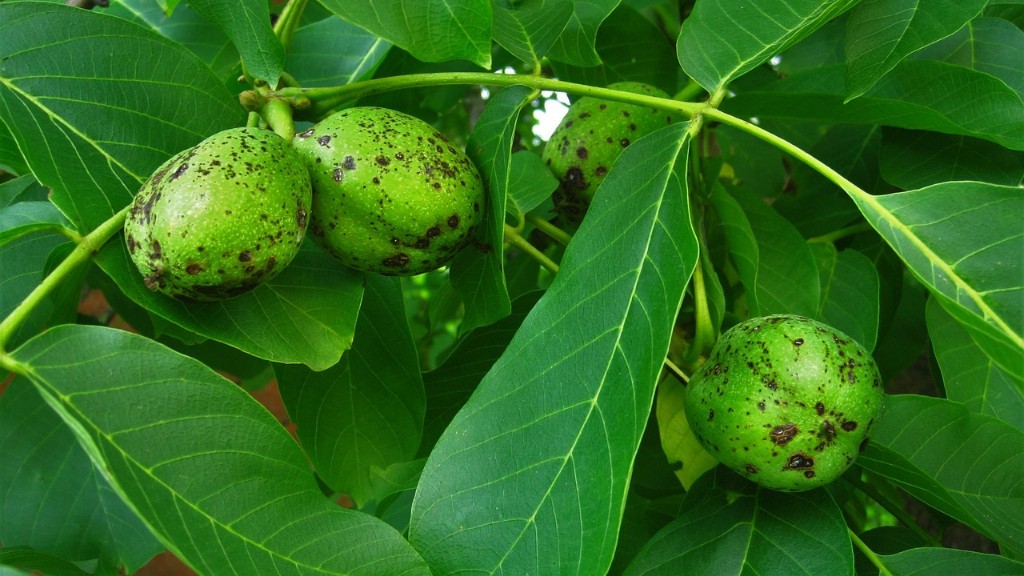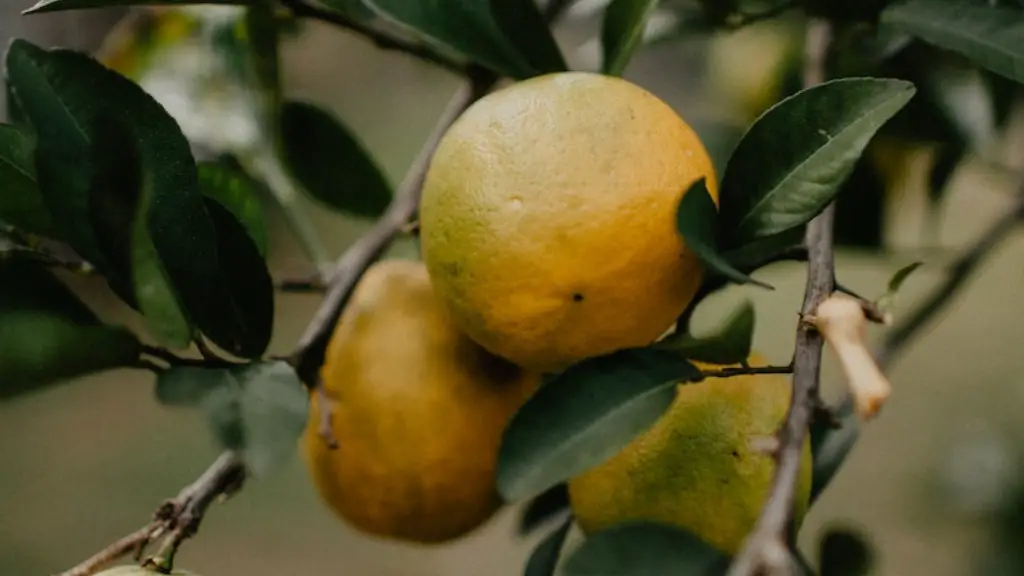Growing a lemon tree from seed can be a rewarding and challenging activity. However, the process can be difficult and requires considerable care. The first step is to acquire a fresh lemon. This can be done by purchasing one at a local grocery store, or by picking one off an existing tree. Next, the seed is removed from the lemon and placed in a warm and moist environment, such as a damp paper towel. Make sure the paper towel is changed regularly to avoid fungal growth.
The seed should then be planted in soil, preferably a pot made of clay or ceramic. Make sure the pot is well-draining. Plant the seed about an inch deep and keep it in an environment with plenty of indirect sunlight. Planting the seed deeper can help to keep the moisture around the seed and provide insulation to help it germinate.
Once the seed has germinated, the soil must be watered regularly. Regular waterings will ensure the soil stays moist and that the roots can absorb essential nutrients. Fertilizer can be used to supplement the soil’s nutrients, but make sure to pick a fertilizer that is appropriate for citrus trees. Additionally, keep an eye out for pests, such as aphids and mealybugs, which can damage new growth.
Finally, the young seedling must be transplanted if it outgrows its pot. Choose a larger pot with the same drainage holes and provide the same indirect sunlight. If the tree is exposed to too much direct sunlight, it can damage the young leaves. Additionally, it is important to prune the lemon tree periodically. This will help keep it from becoming lanky and unbalanced.
Choose Appropriate Fertilizers
When choosing a fertilizer for a lemon tree, it is important to pick one that is specifically formulated for citrus plants. Fertilizers designed for other varieties of plants may not provide the necessary nutrients citrus trees need to thrive. Additionally, organic fertilizers are preferred, as they are generally safer and less likely to cause damage to the tree.
When applying fertilizer to the soil, it is important to make sure that the fertilizers reach the roots of the tree. The nutrients will be quickly absorbed by the roots and will ensure that the tree is well fed and healthy. Additionally, it is important to remember that fertilizer should be applied only once or twice a year. Too much fertilizer can burn the roots of the tree and should be avoided.
Finally, it is important to monitor the soil’s pH level. Citrus trees require a soil pH that is between 6.0 and 7.0. If the pH levels are too low, the soil can be amended with limestone or other substances to raise the pH. If the pH levels are too high, sulfur can be added to lower the pH.
Select Appropriate Sunlight
Citrus trees require an abundance of indirect sunlight in order to remain healthy. If the tree is placed in too much direct sunlight, it can burn the young growth and leaves of the tree. Therefore, it is best to place the tree in a location that receives morning or afternoon sun, but not both.
If the lemon tree is unable to find enough natural sunlight, artificial lighting can be used to supplement the tree’s requirements. Plants require light in the red and blue spectrum in order to grow. Therefore, it is important to choose bulbs that emit red and blue light, such as LEDs. Additionally, the bulbs should be placed at least 12-15 inches away from the tree to avoid burning the foliage or leaves.
Additionally, it is important to make sure the tree receives enough rest. This means the tree should not be exposed to light for more than 10 hours per day. It is also important to give the tree a rest during the winter months. This will help the tree to develop its flowering buds and will help to produce healthier fruits.
Ensure Adequate Watering
Citrus trees require regular waterings to remain healthy. The soil should be checked every 15-30 days to ensure that it is adequately moist. If the soil is too dry, the tree may not receive the essential nutrients it needs. Additionally, too much water can lead to root rot and should be avoided.
When watering the tree, it is important to always use lukewarm water. Cold water can shock the young roots and can cause them to become damaged. Make sure to water the tree thoroughly, until the soil is evenly moist. It is also important to avoid overwatering the tree, as this can damage the roots and lead to disease.
It is also important to avoid any water run-off from the tree. This can collect in the soil and can lead to root rot and other fungal diseases. If the tree is placed in a pot, make sure to always empty the water tray after watering. This will help to ensure that any excess water is removed.
Create Appropriate Humidity Levels
Citrus trees require high humidity levels in order to thrive. This can be difficult to achieve in indoor environments, so it is important to make sure that the tree receives enough humidity. One way to ensure adequate humidity is to mist the tree with a spray bottle every day. This will help to keep the leaves and roots moist and will also help to keep away pests and disease.
Additionally, placing a humidifier near the tree can help to increase the humidity around the tree. It is important to make sure the humidifier is placed far enough away from the tree to avoid burning the leaves or roots. Additionally, the humidifier should be turned off at night, as this can create too much humidity and can lead to fungal diseases.
Finally, it is important to place the tree in a spot that receives adequate air circulation. This will help to keep the humidity levels in check, as well as to keep pests away. Good airflow will also help the tree to dry out quickly after watering, which can help to prevent root rot and other fungal diseases.
Pest Control
Citrus trees are prone to infestations of pests, such as aphids and mealybugs. It is important to be aware of these pests and to take steps to prevent or eliminate them if they appear. One way to control pests is to introduce beneficial insects, such as ladybugs, to the area. These insects will prey on the pests and help to keep them away from the lemon tree.
Additionally, it is important to keep the leaves of the tree clean. This will help to get rid of any eggs or larvae that may have been laid by the pests. If the pests are left unchecked, they can cause serious damage to the tree, such as stunting the growth, deforming the fruits, and reducing yields.
Finally, it is important to keep an eye out for any signs of disease. If any diseases are detected, it is important to take immediate action and to contact an expert for advice. Common diseases of citrus trees include fungal diseases, such as root rot and powdery mildew. These diseases can cause significant damage to the tree and should be addressed as quickly as possible.
Winter Care
It is important to provide the lemon tree with extra care during the winter months. The tree should be pruned of any dead or diseased branches and it is important to water the soil only when it is thoroughly dry. Additionally, it is important to move the tree to a warmer area, as temperatures below 45°F can damage the roots.
In order to keep the tree protected during cold temperatures, it is important to apply a layer of mulch to the soil. This will help to keep the roots warm and protected. Additionally, a layer of burlap can be applied to the tree to protect it from the cold wind. Make sure to remove the burlap and the mulch when warmer temperatures return in the spring.
Finally, it is important to keep the lemon tree away from heating sources. This can dry out the soil and can cause damage to the roots of the tree. Additionally, it is important to make sure the tree is not overwatered during this time. Overwatering can cause root rot, which can be difficult to cure.



